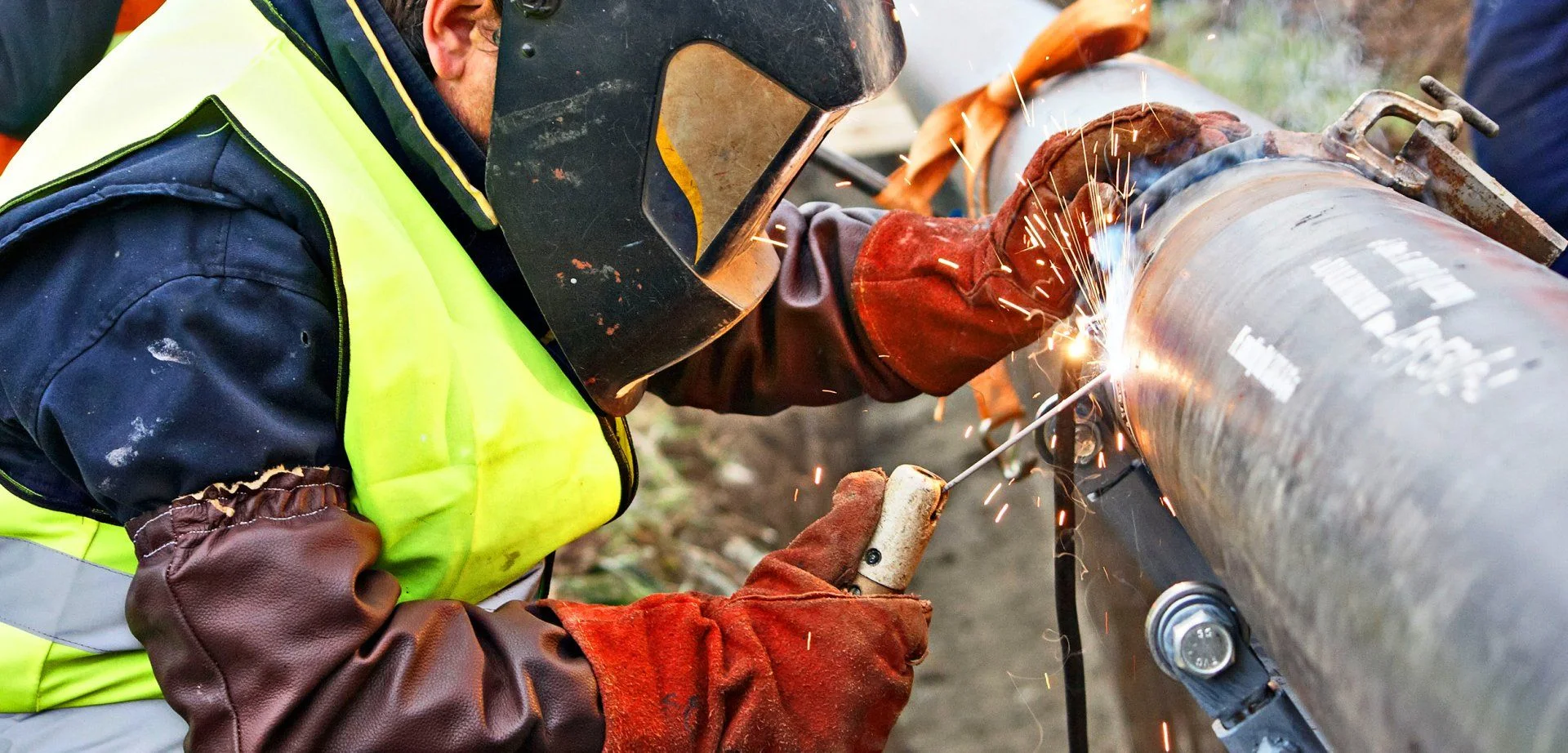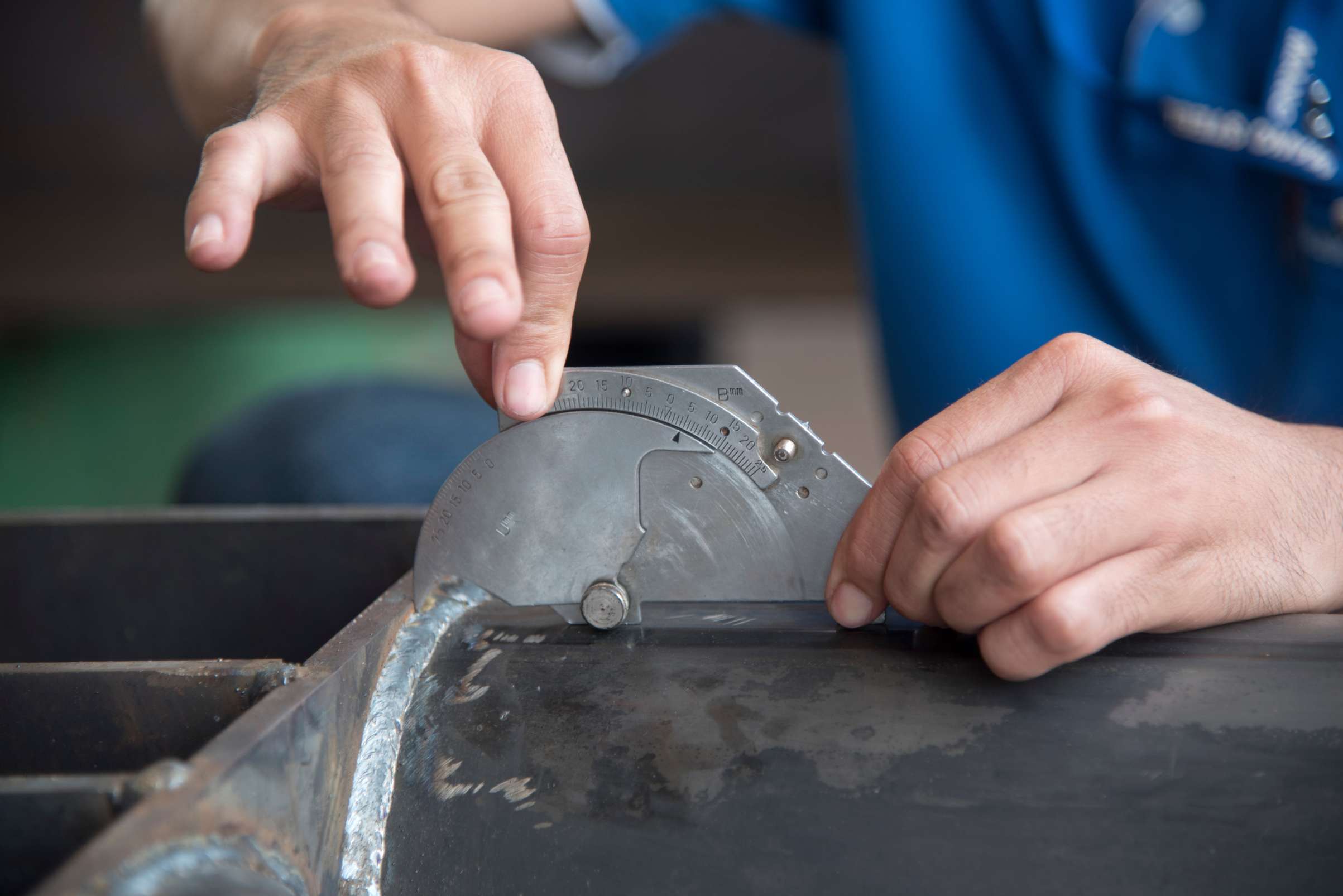Pipeline Welding Inspection: Vital Actions for Reliable Pipeline Building And Construction
Pipeline Welding Inspection: Vital Actions for Reliable Pipeline Building And Construction
Blog Article
Comprehending the Fundamentals of Pipe Welding Examination: Crucial Factors for Reviewing Weld High Quality and Averting Failings
In the realm of pipe welding assessment, the risks are without a doubt high, necessitating an extensive understanding of basic principles to guarantee weld quality and alleviate failure threats. Various essential aspects come right into play, including the choice of suitable materials, the application of sophisticated evaluation techniques, and the recognition of prevalent welding defects.
Importance of Weld High Quality
The stability of a pipeline is basically reliant on the top quality of its welds, making weld quality a vital consider guaranteeing effective and risk-free operation. A pipe weld acts as a junction point where materials are signed up with, and any shortages around can lead to considerable architectural weak points. Poor weld high quality can lead to leakages, tears, and tragic failings, posturing serious safety hazards and ecological threats.
A number of elements contribute to the high quality of a weld, including the choice of welding process, the skills of the welder, and the conditions under which the welding is executed - Pipeline Welding Inspection. Inadequate preparation, inappropriate warm input, and contamination can compromise weld honesty, resulting in problems such as porosity, insufficient fusion, or cracks. Therefore, stringent quality assurance actions must be carried out throughout the welding process to reduce these risks
In addition, the long-term efficiency of a pipe is greatly influenced by the longevity of its welds. Premium welds not only improve the general strength of the pipeline yet additionally expand its life span, lowering the need for expensive fixings and downtime. For this reason, guaranteeing exceptional weld quality is paramount in pipe style and upkeep techniques.
Key Examination Strategies
Ensuring weld top quality demands the execution of efficient assessment methods to recognize potential problems before they cause failures. Pipeline Welding Inspection. Amongst one of the most widely used methods are visual examination, radiographic screening (RT), ultrasonic screening (UT), and magnetic bit testing (MT) Each method offers a distinctive purpose and is chosen based on the particular demands of the pipe project
Aesthetic assessment is the initial line of defense, enabling assessors to assess surface conditions, positioning, and total workmanship. It is a quick and cost-effective method that can reveal noticeable problems. Radiographic screening supplies a detailed sight of internal weld integrity by utilizing X-rays or gamma rays to spot subsurface defects. This method is particularly efficient for determining fractures, additions, and gaps.
Ultrasonic testing uses high-frequency audio waves to assess the thickness and stability of welds, making it excellent for spotting inner suspensions. Magnetic particle testing is a reputable method for recognizing surface area and near-surface problems on ferromagnetic materials by using magnetic fields and great ferrous fragments. By utilizing these essential evaluation methods, pipe welding inspectors can make sure the best quality requirements are kept, eventually resulting in safer and more reputable pipe systems.
Typical Welding Problems
In the realm of pipeline welding, understanding usual welding flaws is vital for preserving architectural integrity and security. These issues can result in devastating failures otherwise recognized and resolved promptly. Among one of the most common defects are porosity, which takes place when gas allures in the weld steel, creating spaces that weaken the joint. One more substantial problem is absence of fusion, where the weld metal does not adequately bond with the base material, endangering the joint's strength.

Cracks are additionally an important concern, materializing in numerous types such as warm splits, cold cracks, and root cracks. Each type poses unique difficulties and calls for specific examination strategies for detection. Undercut is one more defect that can minimize the weld's cross-sectional location, resulting in anxiety concentration points, while slag incorporation occurs when non-metallic material ends up being entraped in the weld pool, negatively influencing the mechanical residential properties of the weld.
Furthermore, inaccurate bead shape can bring about irregular anxiety distribution. Acknowledging these typical problems is necessary for inspectors and welders alike, as early discovery and modification are crucial to guaranteeing the durability and dependability of pipeline systems.

Products and Their Impact
Picking the appropriate materials for pipe welding substantially affects the total performance and reliability of the welded joints. The selection of base steels, filler materials, and layers plays an important duty in identifying the toughness, deterioration resistance, and resilience of the welds. For circumstances, carbon steel is generally made use of for its equilibrium of strength and cost, but it might be susceptible to corrosion in certain atmospheres, requiring making use of protective finishings or corrosion-resistant alloys.
Additionally, different steel welding needs mindful consideration of thermal growth properties and prospective galvanic deterioration. The compatibility of products can significantly impact the microstructure of the weld, bring about variants in mechanical buildings. As an example, stainless-steel uses exceptional rust resistance however may call for details filler materials to make certain an audio weld joint.
Additionally, the effect of temperature and ecological conditions on material option can not be underestimated. High-strength steels may lose ductility at elevated temperature levels, while low-temperature applications could need Read More Here products with boosted strength. Inevitably, recognizing the implications of material choices is vital for accomplishing ideal weld quality and preventing failings in pipeline systems.

Regulative Criteria and Compliance
Regulatory criteria and conformity play a crucial duty in pipe welding, developing the framework within which efficient and safe practices are kept. These requirements are developed by various companies, including the American Society of Mechanical Engineers (ASME), the American Welding Culture (AWS), and the Pipe and Hazardous Products Safety Management (PHMSA) Abiding by these guidelines guarantees that welding treatments satisfy the called for high quality and safety standards.
Conformity with governing requirements is vital not only for making certain the stability of the welds yet additionally for protecting the setting and public security. Assessors are charged with verifying that welding operations adhere to these criteria with rigorous assessments of both the processes and the last welds. This includes examining welder certifications, welding procedures, and the products made use of.
Failing to adhere to established regulations can lead to substantial repercussions, including expensive repairs, legal liabilities, and tragic failures. For that reason, companies should incorporate conformity into their functional practices, cultivating a society of security and top quality. Normal training and he said audits are crucial elements in keeping adherence to these regulatory requirements, making sure that all workers are knowledgeable and geared basics up to maintain the highest levels of pipe welding top quality.
Final Thought
In final thought, an extensive understanding of pipeline welding inspection is vital for making certain weld quality and stopping failings. By utilizing essential inspection strategies and identifying typical welding issues, assessors can successfully analyze the honesty of welds.
In the world of pipeline welding inspection, the risks are undoubtedly high, requiring a detailed understanding of fundamental concepts to make sure weld quality and mitigate failing dangers (Pipeline Welding Inspection).The honesty of a pipeline is essentially dependent on the high quality of its welds, making weld quality an essential aspect in ensuring secure and effective procedure.Several aspects add to the high quality of a weld, consisting of the choice of welding procedure, the abilities of the welder, and the problems under which the welding is carried out. Undercut is one more problem that can lower the weld's cross-sectional area, leading to stress and anxiety concentration factors, while slag inclusion takes place when non-metallic material ends up being trapped in the weld pool, negatively influencing the mechanical homes of the weld
In verdict, a detailed understanding of pipe welding inspection is vital for making sure weld high quality and avoiding failings.
Report this page